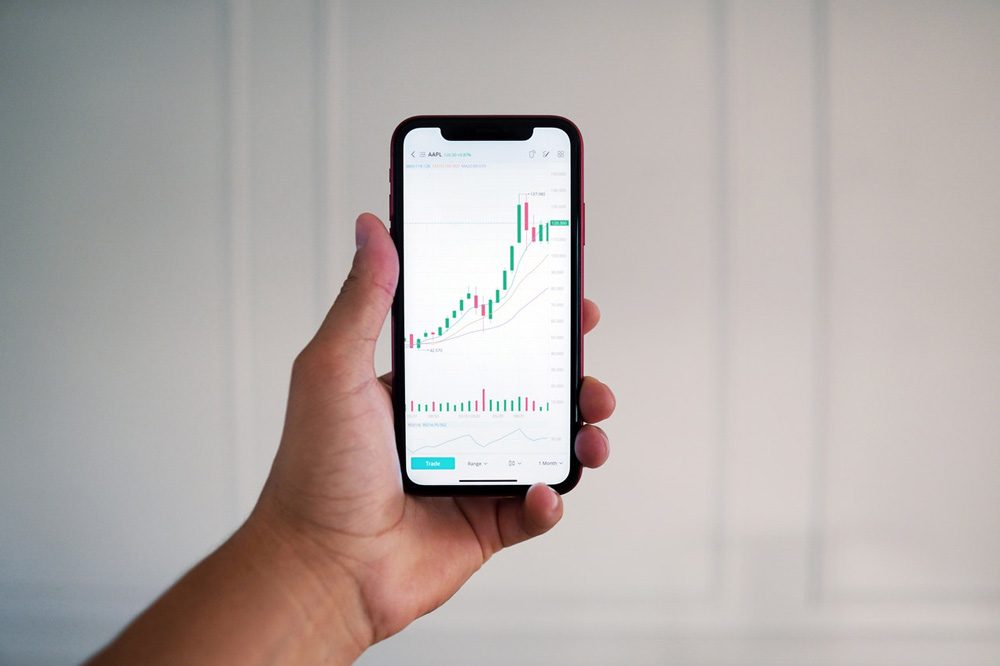Bitcoin trading has never been easier for crypto enthusiasts or institutional investors. Regulated exchanges offer derivatives and futures trading on multiple cryptocurrencies. Crypto gamblers can even receive crypto loans from exchanges with low-interest rates for crypto gambling on the best crypto casino.
Moreover, bitcoin traders have identified patterns related to CME’s futures contracts and the Bitcoin market price. They have seen a gap appearing after each contract expiration. Let us look at the CME gap and how to take advantage of it for Bitcoin’s future success.
What Is The CME?
The Chicago Mercantile Exchange, or the CME, was launched in 1898 as the Chicago Butter and Egg Board. Initially, the exchange allowed traders to buy stocks in commodities like pork and other agricultural products.
In 1969, they began adding financial products to their futures contracts. These include currency, bonds, and interest rates. Furthermore, their first futures contract had frozen pork bellies.
Moreover, it was one of the first financial exchanges to become a publicly-traded company in 2000. Before, exchanges were private-owned member-based companies.
However, the CME had a significant competitor in the Chicago Board of Trade (CBOT) until 2007. Since then, they merged with the CBOT and formed the CME Group. The group extended its conglomerate to include the New York Mercantile Exchange (NYMEX) and Commodity Exchange (COMEX).
Accordingly, the CME Group also purchased a 90% stake in the Dow Jones stock and financial indexes. And in 2012, it bought the Kansas City Board of Trade (KCBT) to increase its influence on the USA financial sector.
Currently, the CME Group offers futures contracts on nearly all commodities. These include gold, silver, oil, and even the weather. In 2017, the CME Group was the first regulated exchange to offer Bitcoin futures contracts.
Accordingly, with Bitcoin’s infamous volatility, trading in these CME Bitcoin futures contracts gives institutional and high-income investors a less risky avenue for investing in Bitcoin. They did not need to visit a variety of crypto exchanges to take advantage of Bitcoin’s growth.
What Is Bitcoin Futures Trading?

Now, this begs the question, What are Bitcoin futures? We have all heard of trading Bitcoin on centralized exchanges like Binance and Coinbase, but these exchanges also offer Bitcoin futures trading.
Now, futures trading has several benefits for traders. Firstly, a futures contract allows them to set a bidding price for buying or selling Bitcoin at a predetermined price.
For example, you can enter a futures contract stating that you would buy 1 BTC for $40 000 on 1 April 2022. Another trader could accept this contract and sell their BTC at this price. Of course, if the value of Bitcoin increases to $50 000, you would buy it at a much lower cost, and the seller would need to take a loss selling it at $10 000 below market price.
Traders also trade these futures contracts, with their values fluctuating according to Bitcoin’s market price. It creates a primary and secondary market for indirectly trading Bitcoin. An important note is that CME Bitcoin Futures contracts do not deal with the actual asset. Traders receive the cash value of the traded Bitcoin. It makes it a more liquid method of trading in cryptocurrencies.
Following that, CME Bitcoin futures contracts do not involve actual Bitcoin. They do not have a direct effect on the market price of Bitcoin. Though, in the long term, there is a possibility that the capital invested in Bitcoin futures will give the asset more stability and liquidity.
Lastly, this long-term effect creates gaps between Bitcoin and the CME futures. It further creates a CME gap compared to Bitcoin’s market price. And crypto exchanges trade 24/7 instead of the CME, which stops trades during the weekend.
What Is A Trading Gap?
Gaps between exchange and commodity market prices frequently occur in the financial sector. More significant gaps usually appear when the asset is highly volatile (in the case of Bitcoin), or it precedes or follows news of the asset.
Accordingly, market information does not constantly update in real-time on indexes like the Dow Jones. Sometimes it takes longer to reflect on exchanges as traders do not receive data simultaneously.

Furthermore, there are generally four kinds of trading gaps. Firstly, there are breakaway gaps. These occur when a new trend starts emerging in an asset’s price movement. It could be the reaction to good or bad news regarding an asset. For example, a company’s reported earnings could be much lower than expected. Traders might attempt to sell off the asset before its inevitable price drop.
Secondly, exhaustion gaps occur when traders make last-minute trades to affect new highs or lows for the asset. It usually happens at the end of a price pattern. For example, many traders could attempt to short an asset before its bearish run. It could result in a gap between the market and exchange price.
Thirdly, there are common gaps that do not occur during a pattern. They pop up due to market conditions related to trading sentiment.
Lastly, continuation gaps occur when there is a consensus between buyers and sellers regarding the future price movement of an asset. It happens in the middle of a price pattern.
What Is The CME Gap?
The gap between CME Bitcoin futures and the Bitcoin spot price occurs because the CME does not trade 24/7. On the weekends, holidays, and late at night in the US, traders continue buying and selling bitcoin on crypto exchanges. It means a price gap when the CME opens for trading again.
It also closes at the same time each day. The CME exchange closes on Friday at 5:45 PM Eastern Standard Time (EST) in the US and opens on Sunday at 6 PM EST. The exchange also closes on public holidays in the US.
Furthermore, the CME gap fills depending on trader sentiment regarding the price movements of Bitcoin. The crypto community believes the gap fills whenever a significant price difference exists. Many crypto traders attempt to leverage this belief to earn profits from buying Bitcoin futures or buying and selling Bitcoin on exchanges when they notice an upcoming gap fill.

However, others believe that the CME gap is inadequate for determining price movements due to several factors. Firstly, the CME bitcoin futures trading volume is much lower than spot trading on Bitcoin. Bitcoin’s trading volume exceeded $1 billion in the last 24 hours, while bitcoin futures on CME only had a trading volume of over $70 million.
Accordingly, this discrepancy makes any movement of CME bitcoin futures prices irrelevant to the overall market price of Bitcoin on crypto exchanges.
Finally, even though there might not be a direct correlation between the two assets, other factors affect the gap and whether traders actively try to fill it.
How Often Is The CME Gap Filled?
There is no consensus on how often the CME gap fills to match the Bitcoin market price. But technical indicators support the frequency of opening fills in general.
Firstly, gap fill frequency depends on irrational exuberance. It refers to when traders are either overly optimistic or pessimistic with their trades. It signals an imminent correction in market price.
Secondly, technical resistance can occur when there are no support or resistance prices for the asset to reach or fall back to. It happens when there is a sharp increase or decrease in asset price.
Thirdly, price patterns are clear indicators that a gap will fill. These occur at the beginning or end of a pattern. It also depends on the kind of gap. An exhaustion gap fills more often than a continuation gap because exhaustion gaps occur at the end of a price pattern. Continuation gaps, however, indicate a new price pattern. It is far more difficult to predict.
Consensus Effect
The crypto community has consistently covered the CME gap since 2018, and they have tried to capitalize on it each weekend when a gap appears. Consequently, this has led to the consensus effect. It is when many traders trade expecting a particular outcome, but the opposite occurs instead.
For example, many Bitcoin users expect the market price to drop two days before the CME closes on Friday. Many traders anticipate this and attempt to buy Bitcoin at this point, but others know about Bitcoin’s tendency to jump back to its market price after the CME closes. Therefore, sellers do not sell, and buyers do not have their orders filled. It results in no gap fill.
On the other hand, the consensus effect only accurately applies to significant trends and has less authority in a volatile market like cryptocurrencies. It means traders make more short-term trading decisions, and the gap might occur more often.
In summary, gap fills occur during many periods. At the beginning of a price pattern. In the middle of a rally or near the end of a bullish run. The trick is to identify the kind of gap and trade accordingly.
How To Trade The CME Gap
Buy Directly and Go Long
The first strategy for trading the gap carries the least risk and effort. Firstly, you must buy Bitcoin 48 hours before the CME bitcoin futures contracts expire. Buying the dip allows you to purchase Bitcoin at a lower price point. You can then sell your holdings after the CME gap fills on Monday. You can repeat this until you make the required profits.
Furthermore, the main benefit of this strategy lies in the fact that you own Bitcoin that you purchased at a lower price. The worst-case scenario leaves you with a valuable asset you cannot immediately sell. It is a waiting game that you win in the short and long term.
Hold And Go Short
The following strategy involves taking advantage of the price dip before it occurs. Here you can short-sell your holdings and repurchase them at the same price but hold more Bitcoin.
For example, you have Bitcoin worth $45 000. You sell it at that price days before the reported dip. You then repurchase the bitcoin with your $45 000. This time Bitcoin’s price sits at $35 000. Then you would have gained $10 000 more Bitcoin than previously.
However, this is a riskier strategy because it involves letting go of your asset. There is no guarantee that the price will dip significantly, and you might need to pay more for your Bitcoin if the price does not fall.

Analysis First, Trade Second
You must analyze the market before executing a trade. Trading based on emotion or the fear of missing out (FOMO) might cause you to miss an essential piece of information. This oversight might result in avoidable losses or losing out on profits.
Therefore, you need to remember that there are different kinds of gaps, each indicating a position to take. Bitcoin CME futures usually follow continuation gaps, meaning that the futures price needs to catch up to the rising Bitcoin price. At the same time, exhaustion gaps indicate the market price dropping to meet the futures price.
Most importantly, once a gap starts to fill, it rarely stops because there are no resistance or support levels to refer to. It means you must make your trade-in time or wait for the next gap to fill.
Final Thoughts
Trading the CME gap requires you to identify the kind of gap present in a given period. Openings do not always fill, but you need to go long and play it safe when they do. Or you could short your holdings and receive higher profits due to Bitcoin’s price dip and risk overpaying for the asset.
It would help if you did your research before attempting to trade the gap. Gap fills are only one indicator of crypto price movements, and you need to use them with other technical indicators.

















